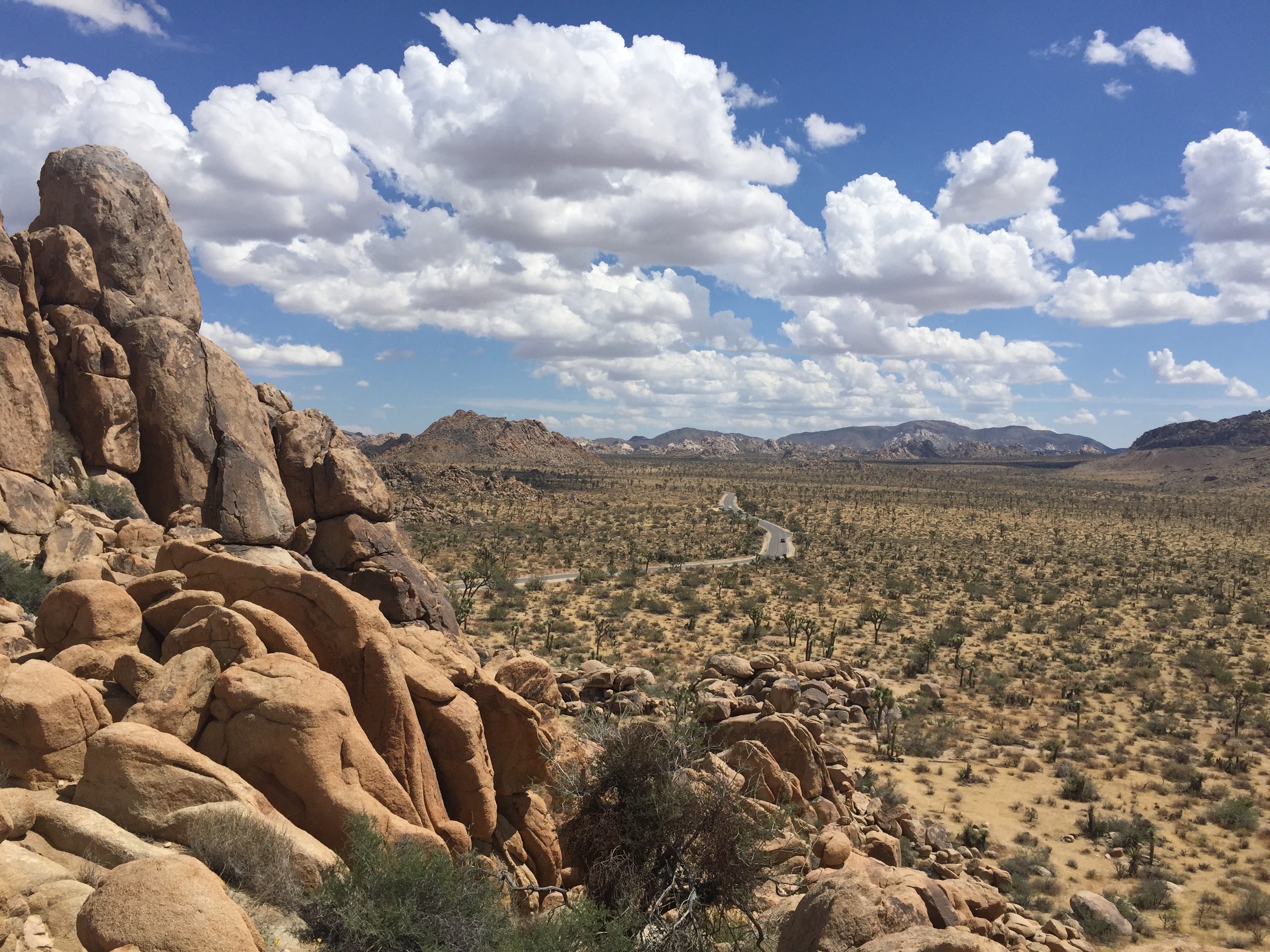Photo credit: April Rocha
Before we can tell, we must remember. The first people to call this part of the Mojave home were the Cahuilla, the Serrano, the Chemehuevi. For hundreds of years, they built shelters of brush or thatch, cleared trails, foraged for nuts and acorns, hunted deer, rabbit, and mountain sheep. They traded fur in the spring and turquoise in the summer. They told stories around the campfire or painted them on the walls of caves. In the 18th century, Spaniards settled this land, bringing with them priests, soldiers, and disease. They were followed by Mexicans, then some decades later by Mormons, who gave a new name to the kind of yucca that grows here and nowhere else. They called it the Joshua tree, after the prophet who thrust his arms skyward in prayer. The Mormons were called back to Utah, but gold miners, cattle ranchers, hustlers, and homesteaders from all over the continent took their place. Wells were dug. Towns sprouted up. To connect them to the rest of the state, a road was built.
The road begins 90 miles east of Los Angeles, at the foot of the San Gorgonio Pass, in a flat wilderness of creosote and mesquite. In the spring, if there has been rain, the valley blooms with yellow wildflowers. In the summer, the earth bakes in the fiery heat. But the wind blows through the pass nearly all year, sometimes at speeds that can uproot a tree or topple an electric pole. Thirty years ago, thousands of wind turbines were erected at this spot, hulking giants that stand out against the landscape. Coming out of the valley, the road narrows as it winds through a canyon, rising quickly to 3,000 feet. The hillsides are rocky and dry; a tossed cigarette can set them on fire in minutes. Signs warn motorists about unsafe passing.

Once out of the canyon, the road levels, makes a sharp turn east, and cuts through the desert all the way to the border with Arizona. Long stretches of it are empty and unlit. It has few signals or stop signs. Either the shoulders are narrow, or there are no shoulders at all. At sunrise and sunset, the glare that hits the asphalt is blinding, turning the horizon into a pool of light. From this liquid shape, small towns emerge and recede.
Years pass, and the road continues to bring new people to the Mojave. Backpackers and rock climbers, asthmatics in need of dry air, artists out of money or inspiration, cons looking for a fresh start, retirees struggling to make it anywhere else, penitents in search of atonement. The adventurous, the sick, the poor, those who are still chasing dreams and those who think the time has come to forget them. In parts, the road is known as Twentynine Palms Highway, a name it shares with the town and the Marine Corps base it passes. The gold miners once called it Dale Road, but today the locals call it Highway 62, or sometimes just the 62.
It is one of the deadliest roads in California.
÷ ÷ ÷
Laila Lalami is the author of
Hope and Other Dangerous Pursuits;
Secret Son; and
The Moor’s Account, which won the American Book Award, the Arab American Book Award, and the Hurston/Wright Legacy Award, and was a finalist for the Pulitzer Prize. Her essays have appeared in
The New York Times, the
Los Angeles Times, The Washington Post, The Nation, Harper’s Magazine, and
The Guardian. A professor of creative writing at the University of California at Riverside, she lives in Los Angeles.
The Other Americans is her most recent book.